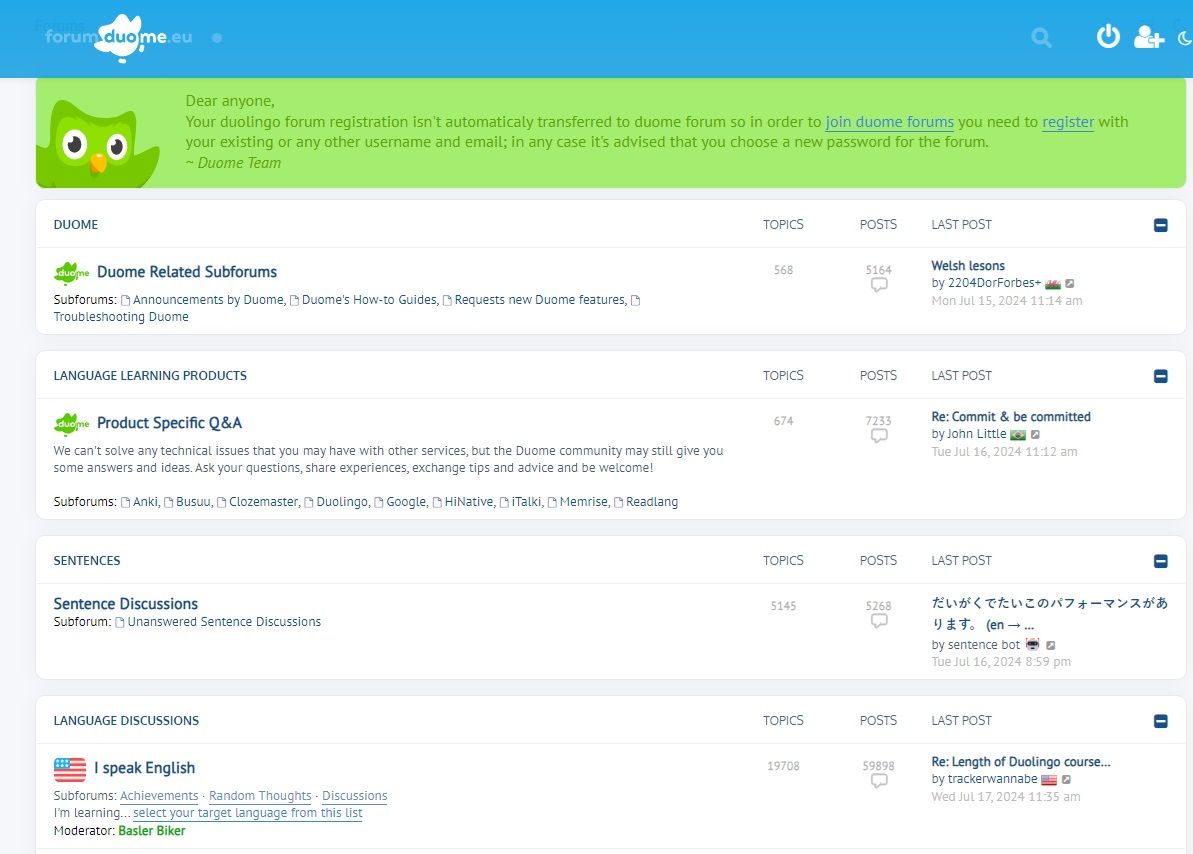I Used to Love Duolingo, but It’s Fallen So Far in These 5 Ways
I use Duolingo every day to learn French and have done so for over five years now. That’s why it pains me to see how far it’s fallen.
The service used to be the go-to app for learning a language, but too many issues have slowly taken away Duolingo’s edge over the competition.
Sorry, Duo, but you’re just not good enough anymore.
1. Duolingo Took Away Its Learning Tree
This was the big change that turned many users against Duolingo. People haven’t stopped complaining about this dumb decision, and neither should they; Duolingo made a huge mistake but has refused to acknowledge it as such.
Duolingo used to have a “learning tree” with a central trunk that branched off into many different lessons.
Couldn’t grasp a particular challenge? Just switch over to a different one and come back to it. Wanted some variety in your day so you’re not spending too long finding out about conjugations? No problem: you can learn more practical things like asking where the nearest restroom is.
This variety of choice meant Duolingo was fun and addictive. Then everything changed.
A major app update meant the learning tree was chopped down and replaced with a tedious, linear structure that you simply can’t escape from.
You don’t have options anymore: follow one set path… and that’s it. There’s nothing creative or educational about this method and it’s meant that Duolingo has become a chore.
2. Challenges Need More Gems
So what if you do want a bit of variety? You can check out other challenges, notably Match Madness and, at the weekends, the Ramp-Up Challenge.
The former lets you pair up words from your native language with ones you’ve learned in previous lessons. That runs across weekdays and each tier gets more difficult as the timer runs down. The XP rewards increase, however, and doubly so if you use an Early Bird or Night Owl Chest!
The Ramp-Up Challenge similarly increases XP while limiting timers.
These are great fun, but they’ll cost you. The cost used to be 30 gems each, so you had to save up a serious number of gems to access these games regularly. Then things got worse: the number of gems needed for each tier of these challenges went up.
They no longer cost 30 gems. They now cost 100 gems each.
That’s a massive increase—designed to push out underappreciated users who just want to learn a new language bit by bit. Of course, they don’t cost any gems if you’ve paid out for Super Duolingo or Duolingo Max, the premium versions of the service.
3. Duolingo Closed Its Forums
One of the great things about learning a language is becoming part of a new community. Duolingo used to revel in that, but not anymore.
If an answer doesn’t make sense, you could turn to the forums to clear up any confusion. It was really useful, especially if you didn’t know a native speaker of the language you’re trying to learn.
Those forums closed in 2022, and though sentence discussions—literally conversations about individual translations—were meant to stay archived and available for reference. Sadly, this archive was also shut down soon after. Some argue that it’s because the communities were pointing out mistakes in Duolingo’s lessons.
Some users have stepped up and created their own replacements. DuoMe has its own streak hall of fame and discussion boards, set up “to help […] rebuild what was lost with [the] old forum closing.” Still, Duolingo itself let us down.
4. Duolingo Is Now Just a Game
This is the biggest problem with the changes made to Duolingo. It feels less like a language-learning app and more like a game.
Can you beat today’s lesson? Can you climb the leaderboard? Can you do better than your friends?
One of the ways Duolingo became more like a game is through the leaderboards, weekly competitions with strangers to advance from Bronze to Sapphire, Amethyst to Diamond. There are 10 leagues in total and if you don’t get enough XP to stay in your current one or be promoted, you’ll drop back down.
Yes, that works for some people. I love gamification. But the focus here should really be on learning, not doing better than someone else halfway across the world.
Games are great, but Duolingo now relies too much on gaming techniques. It’s too tempting to do some quick, easy lessons to boost your XP instead of challenging yourself to a harder class that actually expands your knowledge.
5. If You Want to Improve, You Need to Pay
As you might expect, Duolingo isn’t the altruistic service it once was. It’s less about helping you learn a new language and more about selling you a pricier service.
The basic Duolingo is fine. It does a decent enough job. You won’t become fluent in a foreign language, but you’ll have a good understanding of its basics. If you genuinely want to improve though, you’ll need to pay.
The premium versions of Duolingo come with various advantages. No ads is a positive, but adverts don’t stop you from learning. What might, however, is not being able to partake in lessons. Once you make too many mistakes, your “lives,” indicated by the heart emoji in the top-right corner, will diminish. Lose too many and you won’t be able to play anymore.
You can at least earn these back by practicing or watching ads. Still, premium users get unlimited lives. And that’s not all.
If you’re flagged for making a mistake, you can learn more about it, what you’re doing wrong, and why—as long as you have…
Read More: I Used to Love Duolingo, but It’s Fallen So Far in These 5 Ways
2024-07-20 17:30:00



